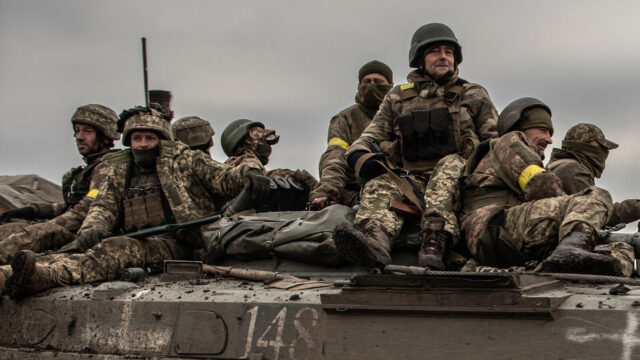Signs of Change on the Front Lines of Ukraine
In the eastern Ukrainian city of Pokrovsk, the air is thick with tension as Ukrainian drones capture live footage of an ongoing conflict. Smoke billows from areas where Ukrainian artillery has struck Russian positions. The struggle for control over this significant transport hub in the Donetsk region has escalated, leading to devastating losses on both sides. Reports indicate a Russian soldier may have been seriously injured, underscoring the harsh reality of this drawn-out war.
The heartbreaking toll of the conflict, characterized as a “never-ending bloodbath” by U.S. President Donald Trump, is visible through the screens in a command center established in a nearby rural house. The destruction witnessed today is far worse than it was six months ago, signaling the relentless battles that have engulfed Pokrovsk.
A Shift in Diplomacy?
There is a stirring of cautious hope among soldiers, even those hardened by previous disappointments. Recent diplomatic efforts from various nations have rekindled discussions between Russia and Ukraine after more than three years of silence. An officer known as “Kozak” notes that Russia’s push for dialogue may indicate a potential shift.
“I want to believe this would be the beginning of the end of the war,” says Kozak, who acknowledges recent Ukrainian successes in disrupting Russian supply lines. Yet, he remains skeptical, highlighting that Russia’s strength has waned since the war’s onset.
The Unsung Heroes
Yurii, a 37-year-old former tech worker, emphasizes the importance of dialogue. He longs for an end to the conflict but insists that Ukraine cannot initiate peace while simultaneously bearing the brunt of aggression. As he adjusts the coordinates of enemy movements, he reflects on his aspirations for peace.
Driving towards artillery positions, the Ukrainian soldiers navigate treacherous terrain, acutely aware of the increased drone strikes that have claimed numerous lives. The evolution of warfare presents new challenges, including drones carrying undetectable fiber optic cables, complicating the battlefield landscape.
Artillery in Action
Arriving at an artillery site camouflaged by surrounding foliage, soldiers quickly begin preparations using a French-made “Caesar” self-propelled artillery gun. Kozak praises its effectiveness over previous Soviet-era equipment, underscoring the pressing requirement for sustained ammunition supplies.
Despite the fear of impending strikes, they fire volleys that pierce the air with thunderous roars as enemy assaults intensify. The pleas for more support from international allies are persistent, highlighting the critical state of the frontline.
The Emotional Cost of War
The prospect of territorial concessions for peace evokes profound sorrow among soldiers. Yurii expresses disbelief that yielding land could lead to lasting tranquility, fearing it would only result in renewed hostilities in the future. Kozak echoes this sentiment, recognizing the sacrifices made by countless comrades.
The war’s impact stretches far beyond the battlefield. Yana Melnikova routinely visits the grave of her son, Vladislav, a young drone operator killed earlier this year. With tears in her eyes, she reflects on the brutality of conflict and her unwillingness to live under Russian occupation.
“This war feels endless,” she laments, warning that peace without genuine security is futile. As a mother, she clings to hope that her son did not die in vain, wishing for a victorious future where Ukraine’s sovereignty is unquestioned.
| Aspect | Details |
|---|---|
| Current Tensions | Intense fighting at Pokrovsk, significant Russian losses |
| Diplomatic Developments | Direct talks between Russia and Ukraine resume for the first time in three years |
| Key Players | Ukraine’s 155th mechanized brigade, artillery units |
| Weaponry | French “Caesar” self-propelled artillery guns deployed |
| Civilian Impact | Grief and loss among families of soldiers |














